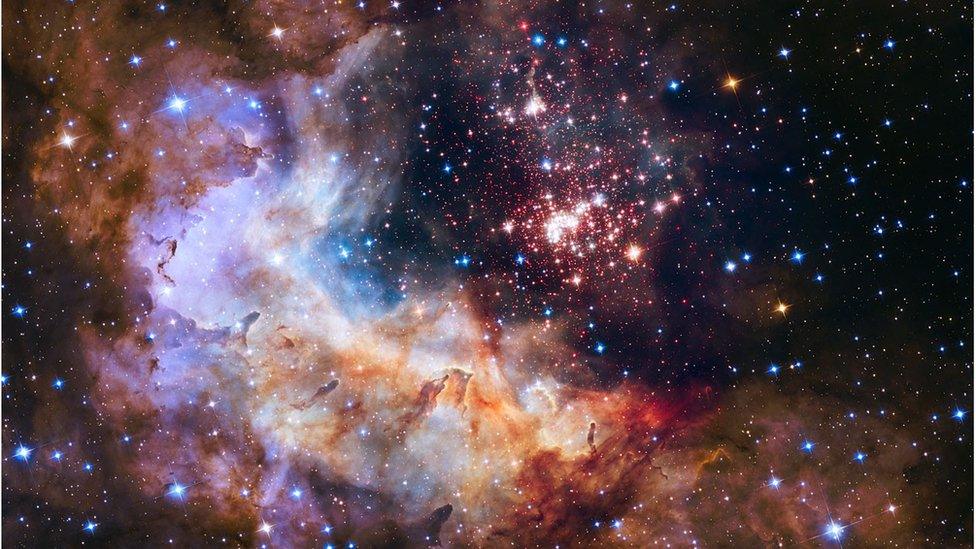Hubble celebrates 25 years of capturing our Universe
- Published

Westerlund 2 is the Hubble telescopes 25th birthday images
The Hubble Space Telescope has celebrated its 25th birthday with a spectacular image of young stars blazing across a dense cloud of gas and dust.
The "Westerlund 2" cluster of stars is located about 20,000 light-years away in the constellation Carina.
Hubble was launched into low Earth orbit on 24 April, 1990.
Named after the astronomer Edwin Hubble, the telescope has recorded some of the most detailed visible-light images ever, allowing a deep view into space and time.
Many Hubble observations have led to breakthroughs in astrophysics, such as determining the rate of expansion of the universe.
"Even the most optimistic person to whom you could have spoken back in 1990 couldn't have predicted the degree to which Hubble would rewrite our astrophysics and planetary science textbooks," commented Nasa Administrator Charlie Bolden.
What the Hubble telescope has taught us
Charlie added: "A quarter of a century later, Hubble has fundamentally changed our understanding of our Universe and our place in it."
The Eagle Nebula
Engineers expect the observatory to keep operating for at least another five years.
Jupiter and one of its moons, Ganymede - captured over a distance of more than 440 million miles (708 million km)
The Spiral Galaxy
M83 Southern Pinwheel Galaxy, Barred Spiral galaxy
The M1 Crab Nebula is 6,500 light years from Earth
A star-forming Nebula
The M82 Cigar Galaxy
The M16 Eagle Nebula
- Published29 October 2014
- Published10 December 2014
- Published3 October 2014
